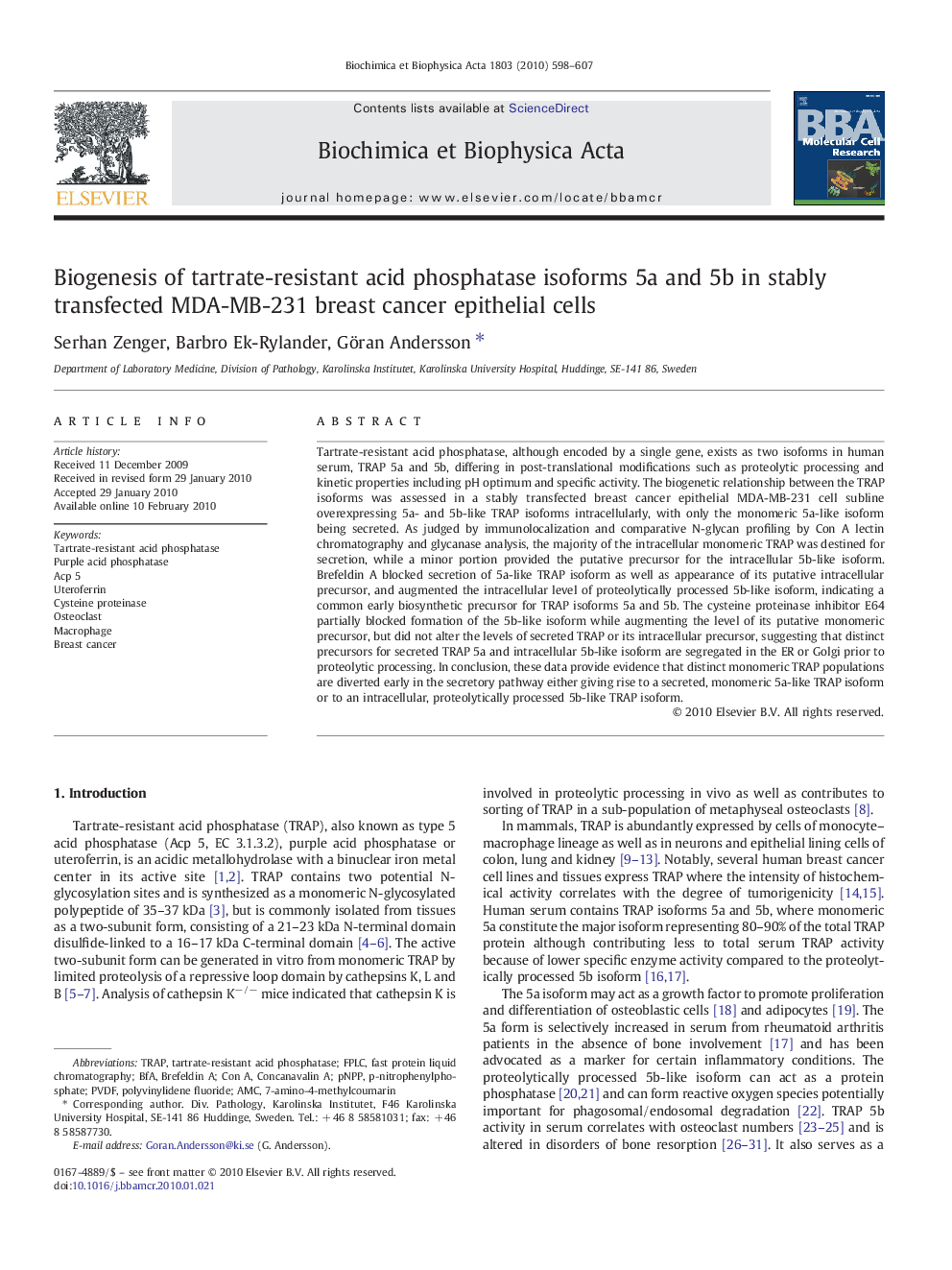| Article ID | Journal | Published Year | Pages | File Type |
|---|---|---|---|---|
| 1951008 | Biochimica et Biophysica Acta (BBA) - Molecular Cell Research | 2010 | 10 Pages |
Tartrate-resistant acid phosphatase, although encoded by a single gene, exists as two isoforms in human serum, TRAP 5a and 5b, differing in post-translational modifications such as proteolytic processing and kinetic properties including pH optimum and specific activity. The biogenetic relationship between the TRAP isoforms was assessed in a stably transfected breast cancer epithelial MDA-MB-231 cell subline overexpressing 5a- and 5b-like TRAP isoforms intracellularly, with only the monomeric 5a-like isoform being secreted. As judged by immunolocalization and comparative N-glycan profiling by Con A lectin chromatography and glycanase analysis, the majority of the intracellular monomeric TRAP was destined for secretion, while a minor portion provided the putative precursor for the intracellular 5b-like isoform. Brefeldin A blocked secretion of 5a-like TRAP isoform as well as appearance of its putative intracellular precursor, and augmented the intracellular level of proteolytically processed 5b-like isoform, indicating a common early biosynthetic precursor for TRAP isoforms 5a and 5b. The cysteine proteinase inhibitor E64 partially blocked formation of the 5b-like isoform while augmenting the level of its putative monomeric precursor, but did not alter the levels of secreted TRAP or its intracellular precursor, suggesting that distinct precursors for secreted TRAP 5a and intracellular 5b-like isoform are segregated in the ER or Golgi prior to proteolytic processing. In conclusion, these data provide evidence that distinct monomeric TRAP populations are diverted early in the secretory pathway either giving rise to a secreted, monomeric 5a-like TRAP isoform or to an intracellular, proteolytically processed 5b-like TRAP isoform.
